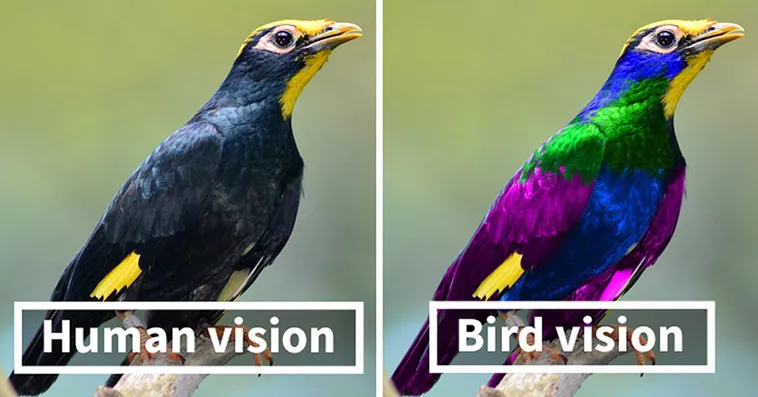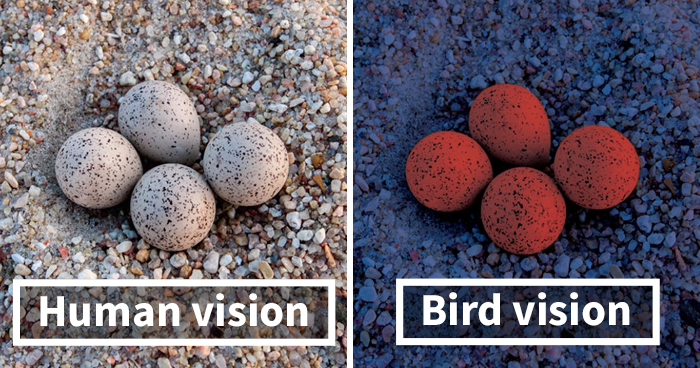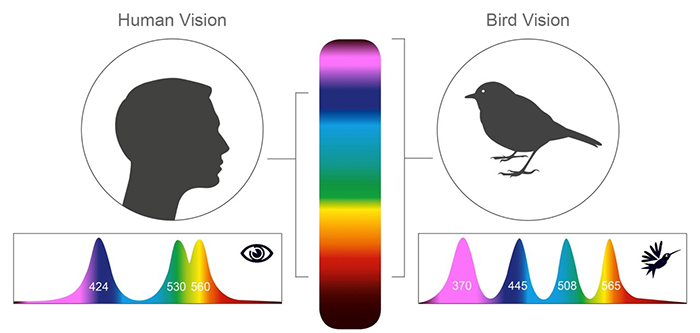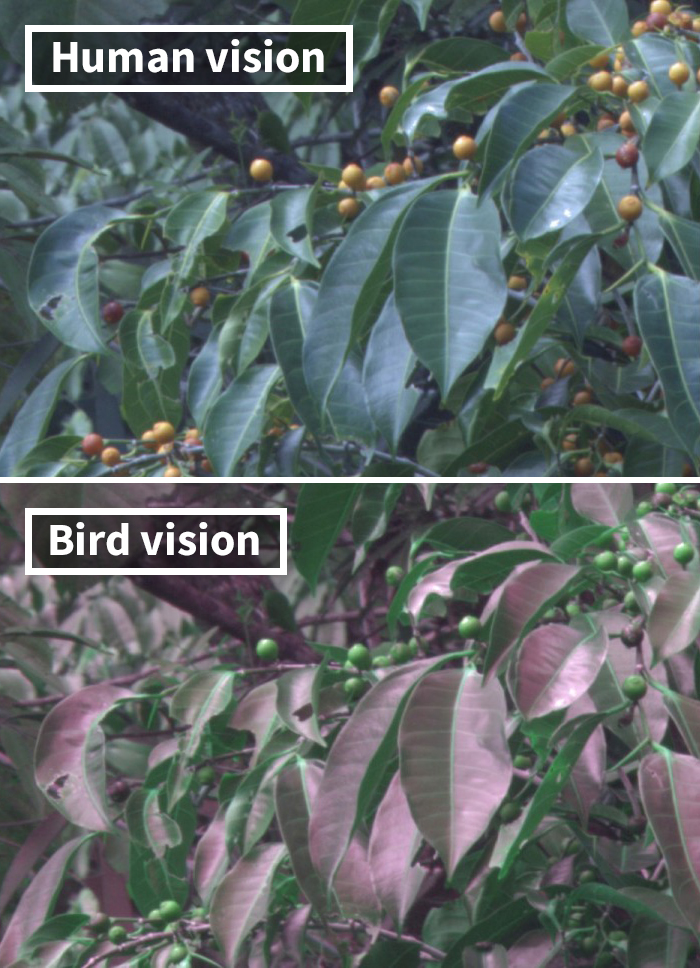The world is a canvas of colors, shapes, and patterns, each perceived uniquely by different species. Birds, with their diverse habitats and evolutionary adaptations, experience the visual realm in ways that significantly differ from humans. Understanding these distinctions sheds light on the fascinating world of bird vision and its role in their survival and behavior.
Humans are Trichromats and can only see Three Colors (Blue, Green, and Red)

Color Perception – Birds are Tetrachromats, They see Four Colors: UV, Blue, Green, and Red
One of the most striking differences between bird and human vision lies in color perception. While humans are trichromatic, meaning we have three types of color receptors (cones) sensitive to red, green, and blue wavelengths, birds often surpass us with tetrachromatic vision. This means they possess an additional cone that allows them to see ultraviolet (UV) light. This expanded spectrum is particularly advantageous for activities like foraging and mate selection.
For instance, many birds display ultraviolet markings on their feathers that are invisible to the human eye but play a crucial role in communication among birds. Additionally, certain fruits and berries, which appear uniform to us, might exhibit distinctive UV patterns visible to birds, aiding them in locating food sources.

Visual Acuity
Birds are renowned for their exceptional visual acuity, often surpassing that of humans. Raptors, such as eagles and hawks, are known for their keen eyesight, allowing them to spot prey from great distances. This heightened visual acuity is attributed to a combination of factors, including a higher density of photoreceptors in the retina and a larger eye size relative to body size compared to humans.

This sharp vision is not only essential for hunting but also for navigating complex environments during flight. Birds can detect subtle movements, identify prey or predators, and locate landmarks with remarkable precision, showcasing the adaptive significance of their visual capabilities.
Motion Detection
Birds excel in motion detection, another aspect where their vision diverges from human perception. Many avian species are adept at detecting fast movements, a skill honed through evolution to evade predators and capture agile prey. This ability is particularly evident in birds like pigeons and sparrows, which can quickly process and respond to visual stimuli, ensuring their swift and coordinated flight.

In contrast, humans rely more on our advanced cognitive abilities to interpret motion rather than detecting it with the same rapidity as birds. Understanding this difference helps explain why birds navigate through dense foliage or crowded airspace with apparent ease.
Peripheral Vision
Birds typically have a wider field of view than humans due to the placement and structure of their eyes. While humans have a binocular field of vision, allowing for depth perception and accurate judgment of distances, birds often sacrifice some binocularity for an extended peripheral field. This broad view aids in detecting predators or potential threats from various angles, enhancing their overall situational awareness.

Bird vision provides a captivating glimpse into the diversity of sensory experiences in the animal kingdom. The adaptations that enable birds to perceive ultraviolet light, detect rapid motion, and maintain a broad field of view are finely tuned to their ecological niches and behavioral needs. As we delve deeper into the intricacies of avian vision, we gain a greater appreciation for the ways in which different species perceive and interact with the visual world.


GIPHY App Key not set. Please check settings